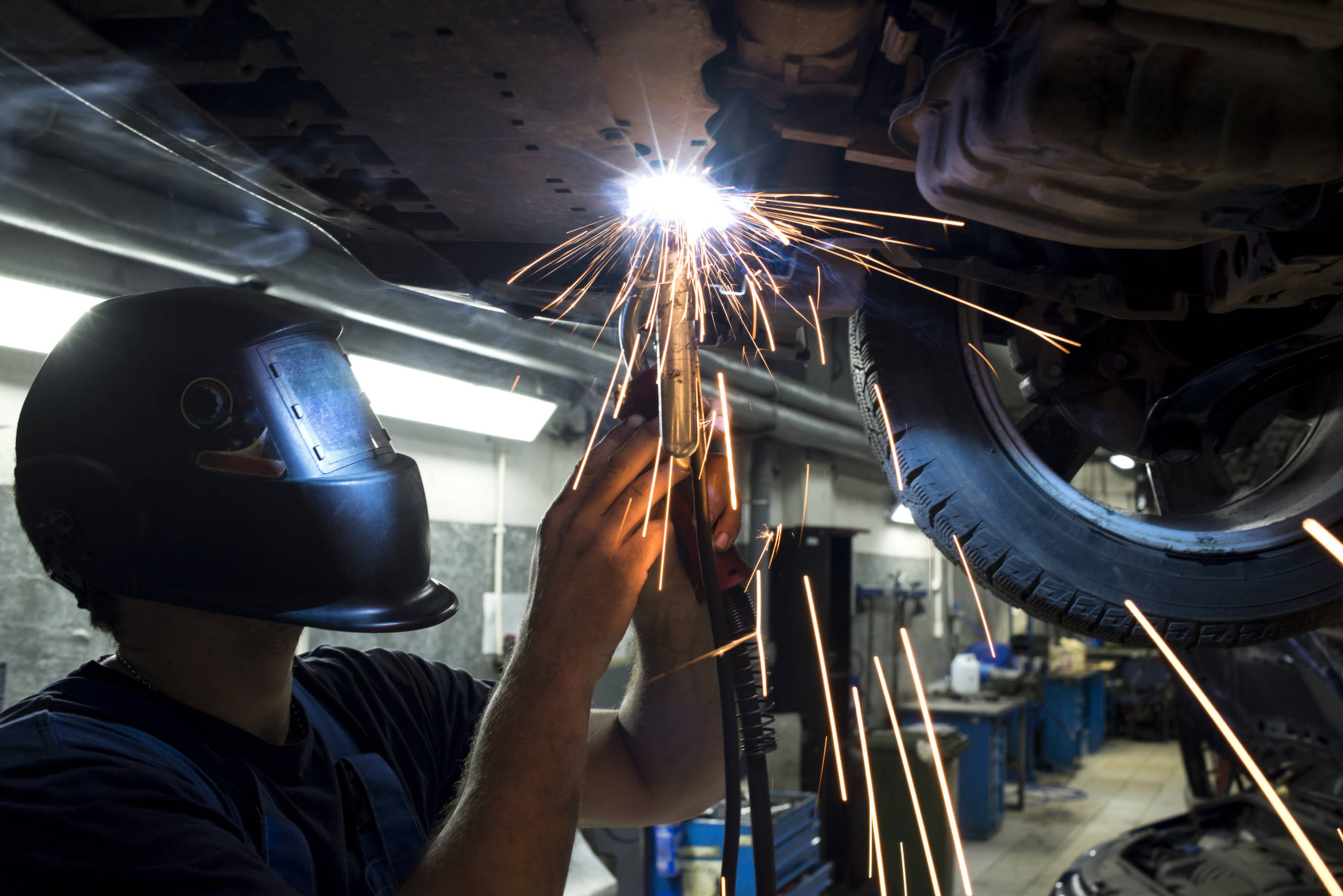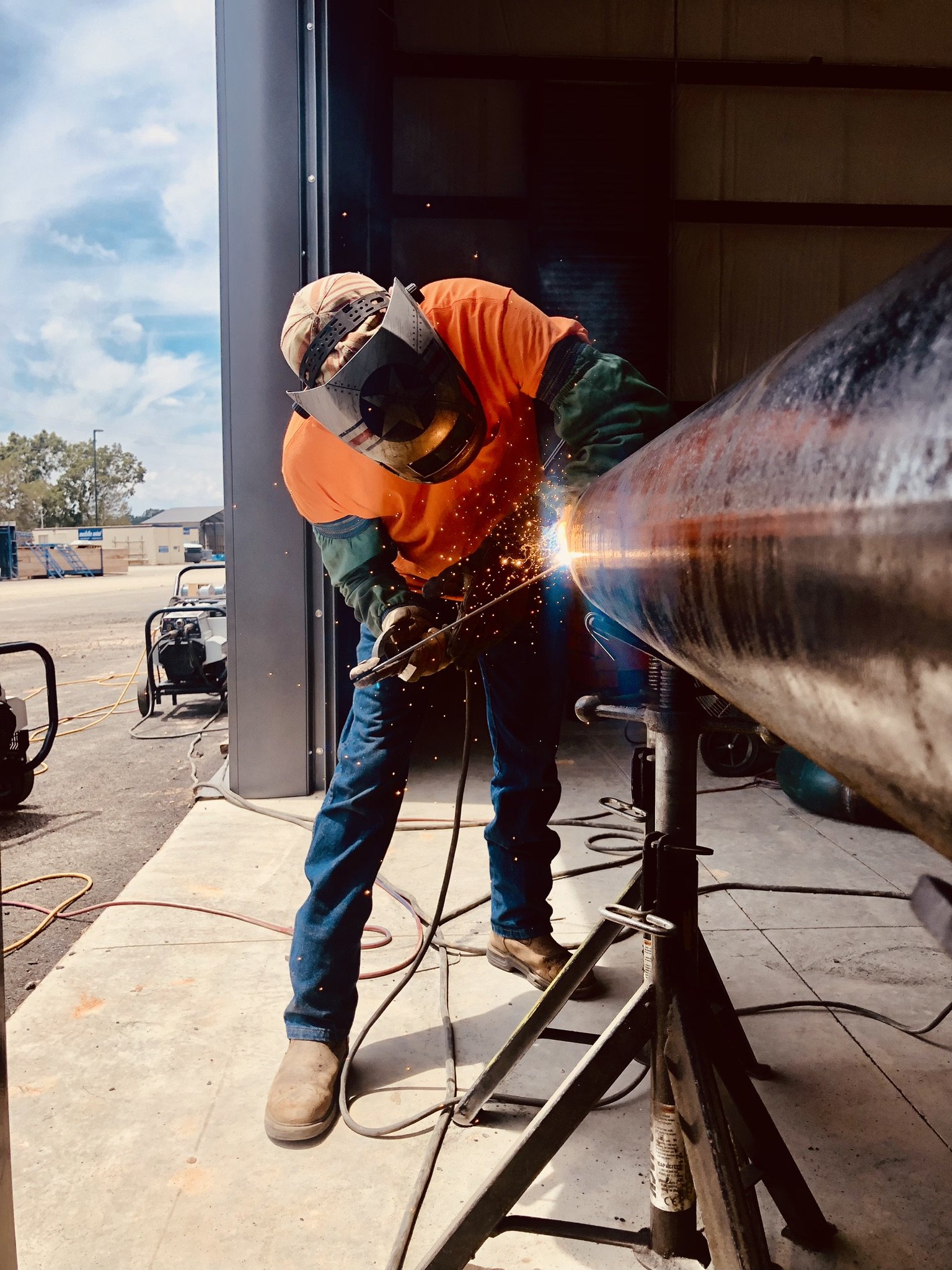All About Welding: Trick Insights Into Techniques and Best Practices for Success
Welding incorporates a variety of techniques, each suited for specific products and applications. Recognizing these techniques, such as GMAW, SMAW, and TIG, is essential for attaining perfect results. Furthermore, the right tools and safety and security practices can not be forgotten. As prep work and fixing play important roles in the welding procedure, understanding these aspects can considerably boost the top quality of the end product. What are the key elements that guarantee an effective weld?
Understanding Different Welding Methods
Welding methods incorporate a variety of methods, each suited to certain applications and products. Amongst one of the most common techniques are Gas Metal Arc Welding (GMAW), Secured Steel Arc Welding (SMAW), and Tungsten Inert Gas Welding (TIG) GMAW, additionally recognized as MIG welding, is popular for its rate and convenience, making it suitable for slim products. SMAW, or stick welding, is preferred for its simplicity and performance in outside settings, especially with thicker steels. TIG welding provides accuracy and control, making it ideal for detailed work and non-ferrous steels (Montana Mobile Welding and Repair Belgrade). Each technique has its unique advantages and considerations, enabling welders to choose the most effective approach based upon the project's requirements, product kind, and desired results. Understanding these methods is essential for effective welding
Crucial Welding Devices and Devices
While various welding techniques call for particular skills, the ideal tools and devices are just as important for accomplishing high quality results. Essential welding devices consists of welding equipments, which differ depending upon the method-- such as MIG, TIG, or stick welding. Safety equipment, consisting of aprons, handwear covers, and helmets, guarantees security and convenience during the procedure. On top of that, components and clamps aid safeguard materials in position, making sure precision in welds. Consumables like welding rods, cable, and securing gas are additionally important elements that affect the top quality of the weld. Additionally, tools such as grinders and cutters promote surface prep work and post-weld completing, adding to a specialist end result. Spending in top notch equipment ultimately boosts the performance and effectiveness of welding jobs.
Security Practices in Welding
Correct security practices are vital in the welding sector to safeguard workers from potential dangers. Welders must use proper personal protective equipment (PPE), including headgears with correct shading, handwear covers, and flame-resistant garments. Sufficient air flow is vital to lower exposure to damaging fumes and gases created during the welding procedure. In addition, employees should be learnt the proper handling of welding tools to stop mishaps. Fire precaution, such as keeping combustible products far from the welding area and having fire extinguishers easily available, are required. Normal assessments of devices and work areas can aid identify prospective dangers prior to they lead to accidents. By sticking to these safety methods, welders can develop a much safer working setting and reduce dangers associated with their trade.
Preparing Products for Welding
Preparing materials for welding is an important action that considerably influences the quality and stability of the final item (Montana Mobile Welding and Repair). Appropriate prep work entails cleaning up the surfaces to eliminate contaminants such as dirt, oil, and rust, which can endanger the weld. Strategies such as grinding, fining sand, or making use of solvents are commonly used to attain a tidy surface. Additionally, guaranteeing that the materials fit together well is vital; gaps can result in weak welds. It's also essential to consider the alignment and positioning of the components, as this will influence the ease of welding and the final result. Choosing the suitable filler product and guaranteeing compatibility with the base metals is essential for accomplishing solid, sturdy welds.
Tips for Getting High-Quality Welds
Achieving high-quality welds needs focus to detail and adherence to ideal methods throughout the welding procedure. Correct joint prep work is important, ensuring surface areas are totally free and clean from pollutants. Choosing the proper filler product and welding technique based upon the base steels is important for suitable bonding. Keeping consistent travel rate and angle while welding can promote and stop issues uniformity. Additionally, regulating warmth input is essential; extreme warm can lead to warping and compromised joints. Consistently inspecting the welds throughout the process enables for immediate adjustments if necessary. Employing appropriate post-weld therapies, such as cleansing and stress relief, can boost the toughness and integrity of the weld, inevitably making certain a successful end result.
Repairing Common Welding Issues
Welding commonly presents difficulties that can influence the top quality and stability of the end product. Typical issues such as porosity, irregular weld beads, and getting too hot can arise, each needing specific fixing techniques. Comprehending these issues is crucial for welders to improve their abilities and attain excellent results.
Porosity Troubles Discussed
Porosity can often be ignored, it continues to be an important problem in welding that can compromise the stability of a completed product. Porosity refers to the presence of little gas pockets within the weld grain, which can weaken the joint and lead to early failing. This problem generally occurs from pollutants, dampness, or improper protecting gas insurance coverage throughout the welding procedure. To alleviate porosity, welders must validate that the base products are dry and clean, use proper protecting gases, and keep consistent welding specifications. Routinely evaluating the equipment and setting can also help determine possible problems before they materialize in the weld. Resolving porosity successfully is important for accomplishing strong, long lasting welds that fulfill top quality requirements.

Irregular Weld Beads
Irregular weld grains can greatly affect the quality and stamina of a finished product. Various aspects add to this concern, consisting of improper travel rate, wrong amperage settings, and inconsistent electrode angles. When the welder relocates too rapidly, a bead might appear narrow and lack penetration, while moving as well gradually can trigger too much buildup. Furthermore, making use of the wrong amperage can lead to either undercutting or excessive spatter, both of which compromise weld stability. The welder's method, such as inconsistent lantern activity, can also result in irregular grain look. To minimize these problems, welders should concentrate on keeping stable, controlled movements and making sure appropriate equipment settings to achieve uniformity in their welds. Uniformity is key to accomplishing strong and trusted welds.
Getting Too Hot and Bending Issues
Excessive warm throughout the welding procedure can result in considerable getting too hot and contorting issues, affecting the architectural stability of the workpiece. These problems often manifest as distortion, which can jeopardize alignment and fit-up, making further setting up challenging. Elements adding to overheating consist of the choice of welding specifications, such as gmaw voltage and travel rate, as well as the kind of product being welded. To mitigate these issues, welders ought to maintain regular travel rate and ideal warm input while keeping an eye on the work surface temperature. Furthermore, pre-heating or post-weld heat treatment can help relieve stresses caused by quick air conditioning - Belgrade Welding. Regular assessment and adherence to ideal methods are necessary in stopping getting too hot and making sure the longevity and reliability of bonded frameworks
Often Asked Inquiries
What Are the Career Opportunities in the Welding Industry?
The welding industry supplies diverse career opportunities, consisting of settings as welders, engineers, examiners, and instructors. Professionals can work in production, construction, aerospace, and automotive fields, gaining from strong demand and competitive incomes in different roles.
Exactly How Can I Enhance My Welding Rate Without Compromising High Quality?
To boost welding speed without sacrificing high quality, one need to exercise reliable strategies, preserve equipment, enhance settings, and improve hand-eye control. Normal training and looking for comments can additionally substantially add to attaining faster, top quality welds.
What Accreditations Are Readily Available for Welders?
Numerous qualifications exist for welders, including those from the American Welding Society (AWS), the National Center for Building Education and Research (NCCER), and different industry-specific organizations. These qualifications improve employability and show ability efficiency.
Just How Does Welding Affect the Features of Metals?
Welding influences the homes of metals by modifying their microstructure, which can lead to changes in hardness, stamina, and ductility. Heat input and cooling prices throughout the procedure significantly impact these product features.
Can I Weld Dissimilar Metals With Each Other?
